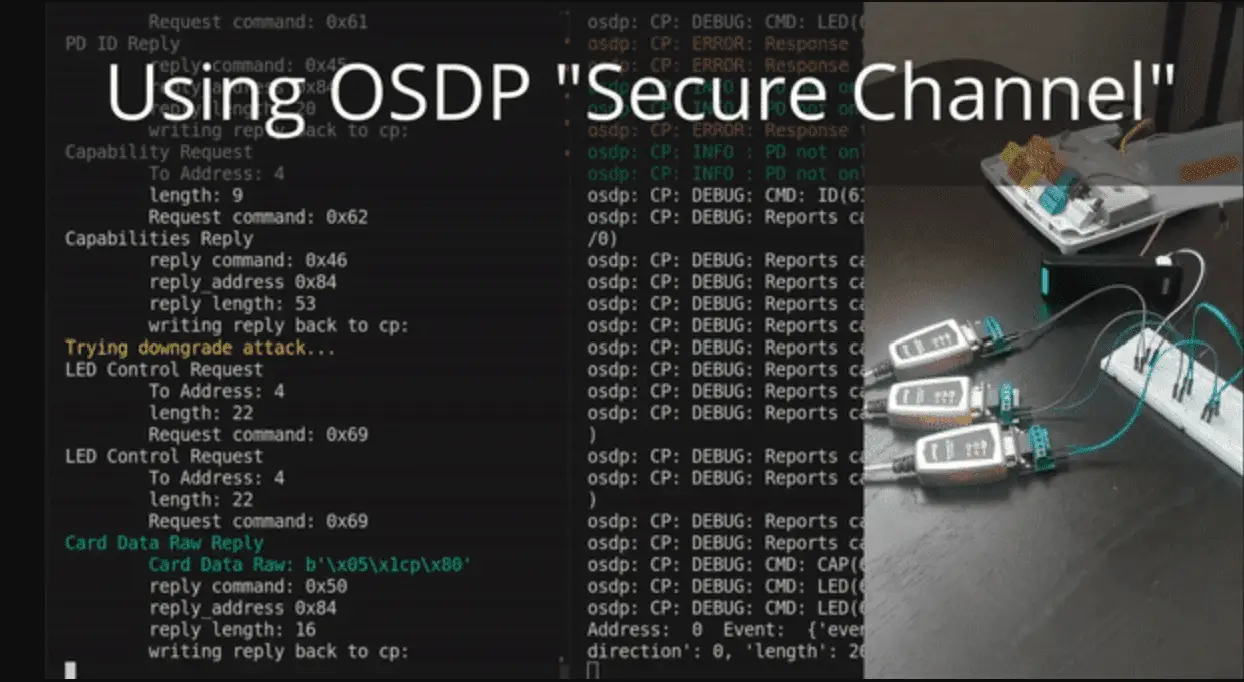
OSDP (Open Supervised Device Protocol) Vulnerabilities
Attack #1: Encryption is Optional
OSDP supports, but doesn’t strictly require, encryption. So your connection might not even be encrypted at all. Attack #1 is just to passively listen and see if you can read the card numbers on the wire.
Attack #2: Downgrade Attack
Just because the controller and reader support encryption doesn’t mean they’re configured to require it to be used. An attacker can modify the reader’s capability reply message (osdp_PDCAP) to advertise that it doesn’t support encryption. When this happens, some controllers will barrel ahead without encryption.

Attack #3: Install-mode Attack
OSDP has a quasi-official “install mode” that applies to both readers and controllers. As the name suggests, it’s supposed to be used when first setting up a reader. What it does is essentially allow readers to ask the controller for what the base encryption key (the SCBK) is. If the controller is configured to be persistently in install-mode, then an attacker can show up on the wire and request the SCBK.
Attack #4: Weak Keys
OSDP sample code often comes with hardcoded encryption keys. Clearly these are meant to be samples, where the user is supposed to generate keys in a secure way on their own. But this is not explained or made simple for the user, however. And anyone who’s been in security long enough knows that whatever’s the default is likely to be there in production.
So as an attack vector, when the link between reader and controller is encrypted, it’s worth a shot to enumerate some common weak keys. Now these are 128-bit AES keys, so we’re not going to be able to enumerate them all. Or even a meaningful portion of them. But what we can do is hit some common patterns that you see when someone hardcodes a key:
- All single-byte values. [0x04, 0x04, 0x04, 0x04 …]
- All monotonically increasing byte values. [0x01, 0x02, 0x03, 0x04, …]
- All monotonically decreasing byte values. [0x0A, 0x09, 0x08, 0x07, …]
Attack #5: Keyset Capture
OSDP has no in-band mechansim for key exchange. What this means is that an attacker can:
- Insert a covert listening device onto the wire.
- Break / factory reset / disable the reader.
- Wait for someone from IT to come and replace the reader.
- Capture the keyset message (osdp_KEYSET) when the reader is first setup.
- Decrypt all future messages.
Install & Use
Copyright (C) 2023 BishopFox